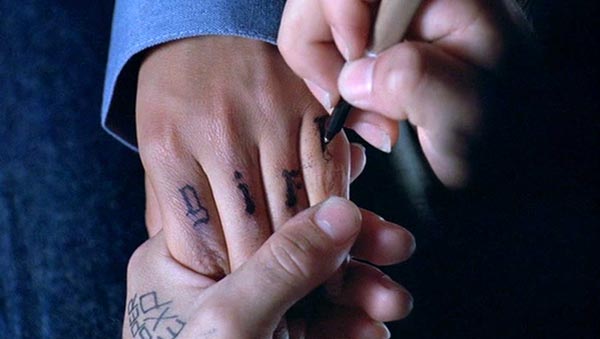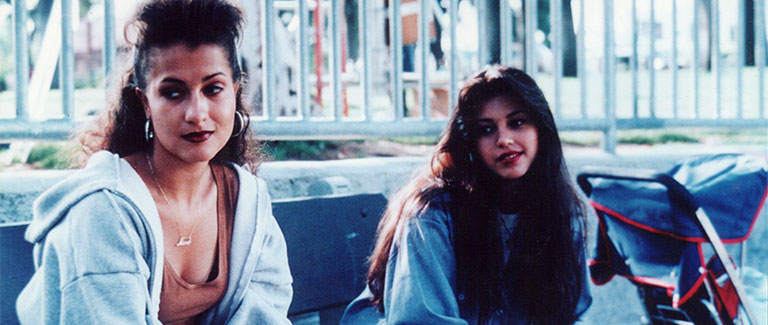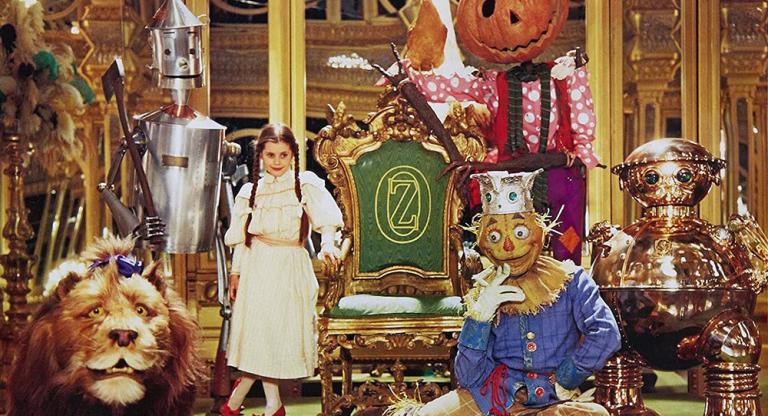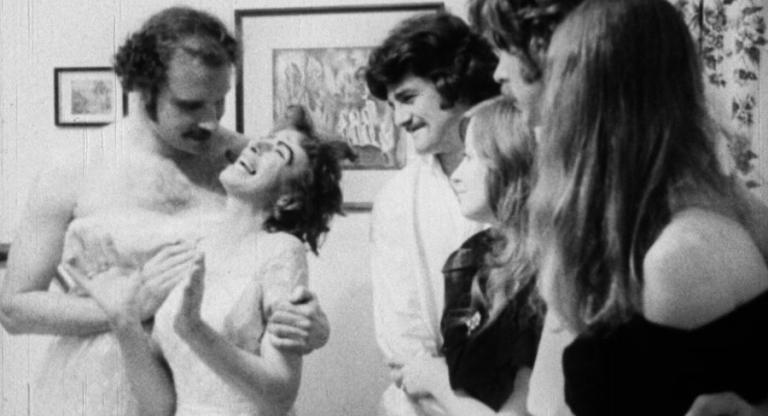Allison Anders’s 1994 film Mi Vida Loca follows the stories of young Chicanas in the pre-gentrification Los Angeles neighborhood Echo Park. The women portrayed are rebellious, independent and emotionally complex, recalling Los Bros Hernandez’s Locas stories. And contemporary audiences can relish at the women’s individualistic aesthetic: pompadour hair, cat-eye liner, form-fitting dresses, teardrop tattoos, baggy trousers, and Nike sneakers that are so en vogue right now (and delectably immortalized by Guadaupe Rosales’s Instagram account @veteranas_and_rucas). But most of all, for young women of color seeing the film in various communities in both the United States and abroad, Mi Vida Loca seems to capture a familiar romantic fatalism in which the only hope is to be found in your family, chosen or otherwise.
Anders will present Mi Vida Loca on Wednesday, May 16 at Drafthouse Brooklyn on a rare 35mm print. In advance of this special evening, Anders took the time to answer some of my questions via email. We talked about the inspirations for the story, working with real gang members, the inspiration Anders drew from other female filmmakers, and the importance of music in her work.
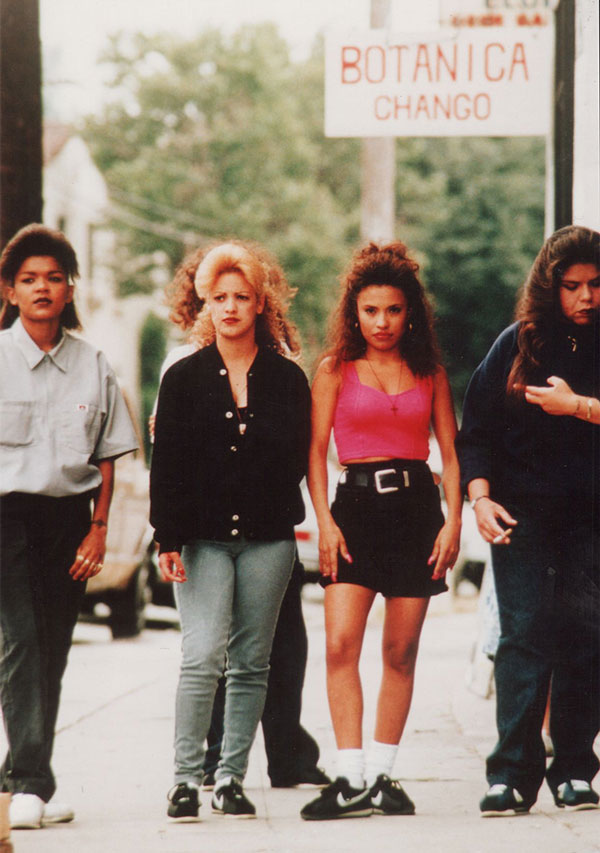
CG: In a BOMB interview from 1994, you said you were inspired to write Mi Vida Loca by friends of your daughter in Echo Park, two friends who became pregnant by the same man. Can you expand on what specifically drew you into the stories of those two young women and their involvement in Echo Park gang culture?
AA: The story was told to me by my young daughter Devon, who speaks Spanish and knew everything going on in the neighborhood, and was a jumping off point for the story of Sad Girl and Mousie. When we moved into Echo Park, pre-gentrification, you could buy Teen Angels magazines at the great corner newsstand at Echo Park and Sunset. For us [filmmaker Kurt Voss and me], these magazines reminded us of punk rock fanzines in that they were an insight into an LA subculture.
The girls my daughter told me about were actually not in the Echo Park gang. But I met the Echo Park Locas a short time after moving to the neighborhood. My goal was to get inside their heads and understand, just as I would any subculture. But because of the criminal element and police harassment, I felt an extra responsibility to discover and convey their hopes and dreams, no matter what they were, and not through society’s expectations. I felt like if after seeing Mi Vida Loca if one person who connected to Whisper or Baby Doll or Ernesto any of the characters saw a chola on the street, maybe they’d not just dismiss them, they’d know a beating heart with dreams all their own.
CG: What were your visual references for the film?
AA: Well I was so lucky that my producers at Cineville brought in Rodrigo García [author note: Rodrigo is a Colombian filmmaker and son of “El Gabo”] to meet as cinematographer. Until Rodrigo came in, every DP I met with said they saw the movie very gritty. And I knew how wrong that was. They were seeing an urban, colorless, edgy world, and I wasn’t. Rodrigo came in and said, “I see shooting it [to look] very romantic.” It was SO right! Because I knew that’s how they saw their lives, as very romantic. And Rodrigo wanted color and vibrancy, and so did I. We were so in sync—we went against the grain of the time for sure. Needless to say, he’s such a wonderful writer/director himself now. I love him dearly.
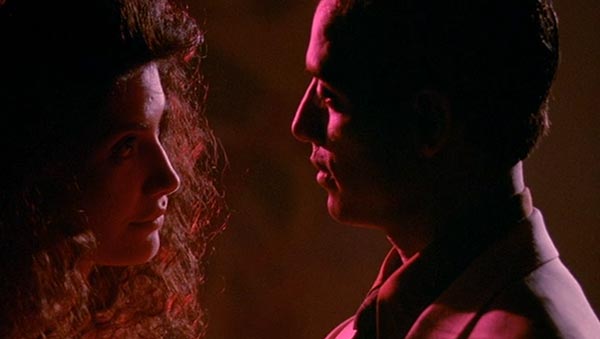
CG: Did you have any apprehension on working on this story—a very delicate one, written at a time when media was less than generous with its stereotypes of Latinos, as an outsider?
AA: Honestly I didn’t think about the risk at the time in the media—I was very concerned however with keeping the real gang members in the cast and crew safe. So my producers and I involved the Echo Park members every step of the way to know which neighborhoods were safe for us to shoot in. We literally took them in the car location scouting to check out the safety. Sometimes the borders were block to block: “We can shoot down here—but not across the street.”
CG: You also stated that you used multiple narrations in Mi Vida Loca to avoid a colonialist point of view. To me, that multi-perspective point of view from those who live in the neighborhood, telling their stories in their own words, is so meaningful. Could you expand on how that impetus translated in practical terms on set?
AA: Oh I’m so glad you said that. Well, when I look at the film now, and realize how many different voice-overs there are telling the stories, I’m both pleased and relieved, because somehow we know very clearly who’s talking and whose point of view it is. Now, if I go all Fred Wiseman on us for a moment—well, sure, every film is a construct, and ultimately it’s my point of view as the author of the film. But it was really important to me to have these characters speak from their interior space. And while every film I make I approach like a documentarian to a certain extent, this one was perhaps more than any of my others. Even though there are storylines which are personal to me.
And it’s about single moms, which I of course was also, and I had been raised poor myself and had been a welfare mother just two years before making this movie. We connected through class.
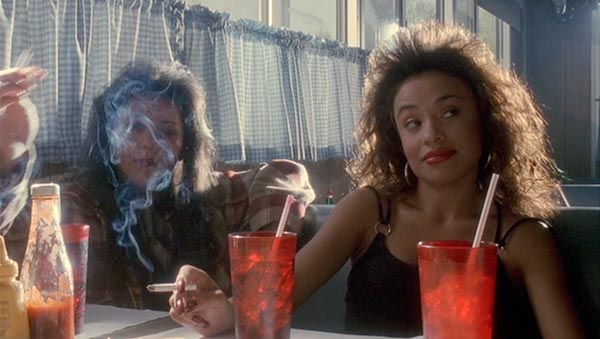
CG: You consulted with gang members along the way to make the dialogue and situations as realistic as possible. How did that collaboration play out? Did you learn anything from that process?
AA: Oh it was the best. They read and approved every single draft of the script, and after a while could pitch it and give notes better than anyone I’ve met since, seriously.
They were involved and paid and credited in every single department in post and production. We even kept the money in the neighborhood literally – the art department rented set dressing from their homes – which also gave a sense of pride that a movie company was renting some banner they made for their bedroom to put on film. We rented the homes of the parents and grandparents of the Echo Park locas and locos. Make-up purchased the real stuff the actual girls wore from Woolworth’s on Sunset Blvd.
And the music was a whole other level too. Cause at that time, this subculture took their music very seriously. In the internet age we might all listen to jams from various decades, but before that, not so much. These kids listened to songs that we were recorded long before they were born, and some new song couldn’t just get into their arsenal of songs—it had to last for decades and be dedicated to and from each other—it had to pass the muster. So they made mix tapes for me of songs they loved, and if I brought something in, I had to run it by them first.
My dream was to be able to bring in a song that they didn’t have in the subculture before and make it a classic, maybe be dedicated on Art Laboe’s show one night. Well John Taylor of Duran Duran, my composer, sampled “Girls It AIn’t Easy” by Honeycone in his score. I’d never heard it before, and realized “Oh my god—that song is so perfect for this movie”.
I played it for the locas, and they died they loved it so much. They approved, and I used it over the end credits. After the movie came out, I was driving one night listening to Art Laboem and a girl called in and said, “Hey Art, this is Little One from La Puente, and I want to dedicate ‘Girls It Ain’t Easy’ to my homegirls, cause you know it ain’t.”
I burst into tears I was so happy! Now it’s become a classic dedication song, and it infiltrated the chola culture through a New Romantic from Birmingham, England!
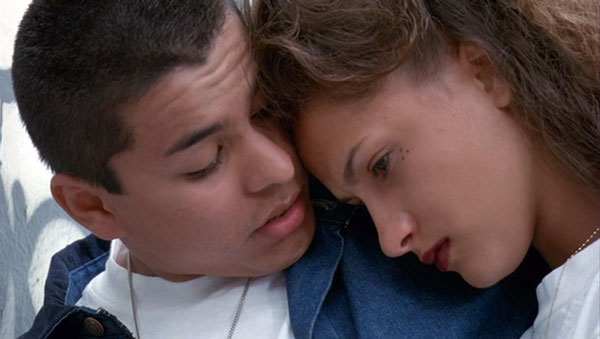
CG: Could you talk about your experience mixing non-actors with actors—in particular, your use of real gang members during shooting. Whisper (Nélida López) is such a natural talent. How did you approach casting and directing them on set?
AA: Oh yeah, Nellie was a true natural, and she was the youngest member of the locas at the time, and the first person I approached to meet them. It had always been my goal to mix the cast with actors and non-actors. I like this approach and have continued to do this throughout all my films, because I find the non-actors can bring an edge, which can give freedom to actors, and actors can give structure to non-actors, so they can balance each other beautifully.
I had been inspired and emboldened by Shirley Clarke’s film The Cool World, which I saw in film school at UCLA. Clarke, who was a professor there at the time, gave a Q&A with Professor Janet Bergstrom, and I was really struck by the natural performances, and she had cast actors and non-actors together. She also gave some insight I used too, which was that she kept in touch with the non-actors for a decade. She cited a film in the 30s who had used street kids, and they all thought they’d become movie stars, and there were tragic results. She didn’t want that to happen, nor did I.
So I’m 26 years in now, ha. Well more, since I met them in the late 80s.
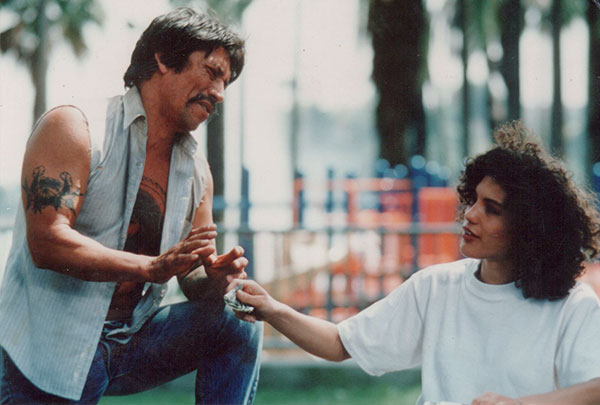
CG: I appreciated so much your depiction of female friendship—fraught, complicated, but above all a deep sisterhood and women’s survival instinct in a sweet, unfussy way. I think the details, peaks and lows from Mousie and Sad Girl’s friendship, synchronized periods, being sick of men’s shit, that could have only been written by a woman. Could you talk about your experience as a woman director, working with a range of budgets and collaborators over time?
AA: Since I was small I craved movies about female friendships, especially with young girls. We had some great ones in the 1960s, like The World Of Henry Orient, which was written by Nora Johnson. I have a poster of that movie leading into my granddaughter’s playroom, because I love the friendship of those two girl characters who embolden each other. I also loved two films written by Blanche Hanalis and Jane Trahey: The Trouble With Angels—which was directed by Ida Lupino!—and Where Angels Go Trouble Follows. These films meant the world to me for showing female friendships, which can include men, but in a very subordinate way. They have deeper things going on, and their friendship is the true bond.
And in 1980, Foxes! So I had those as guideposts for me in creating that friendship between Mousie and Sad Girl, even if Ernesto is at first a driving obstacle, their bond with each other is the true love story.
CG: The film’s music supervisor is famed DJ Jellybean Benitez, and in Gas Food Lodging, J Mascis contributed to the atmospheric soundtrack. You had John Doe and Dave Alvin on Border Radio, and you are involved in a successful rock film festival DKTR (Don’t Knock The Rock Film and Music Festival). Could you talk about those collaborations and your perception of the relationship of music and film?
AA: I can trace my addiction to the highball of film and music as a powerful cocktail to screaming my head off with a packed audience of girls in 1964 watching A Hard Day’s Night. The first strum of the title song and The Beatles running down the street being chased by fans in that glorious black and white changed my life.
And when I was at UCLA film school, Robert Rosen screened a double bill of A Hard Days Night and Beyond The Valley Of The Dolls, and it really sealed the deal for me that I had to make movies just so I could do THAT. Put music and film together to tell stories.
So when it came to making my first film there was no question that it would be heavily music driven. I’ve also always cast musicians in my movies and it began with Border Radio casting John Doe, Chris D, Dave Alvin…and we recruited Dave and Steve Berlin to create the score, rather than go to a film composer. The next film my daughter Tiffany suggested J Mascis to score Gas Food Lodging, and he’s in the movie too.
I even have a few in Mi Vida Loca: Kid Frost is in the movie as Mousie’s dad, Robert Lopez aka El Vez and of The Zeros fame is a DJ at the nightclub scene. And of course the last four films I made are all about musicians.
My daughter Tiffany and I started DKTR, because I had begun teaching a class I created at UCSB on rock and roll movies and I loved doing it so much, I thought we should make it a festival with her booking bands and me programming the films. As years went on we evolved we are both programming the movies together now. It’s a lot of work but so rewarding – I’m still trying to give people that experience I had with A Hard Days Night as a kid!
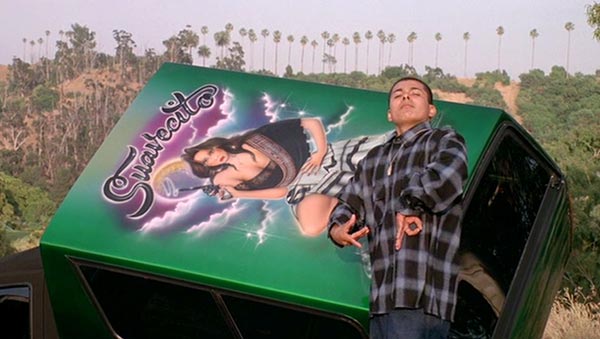
CG: The film print that will screen at the Alamo was imported from France. I’m curious about the film’s reception outside of the US?
AA: Ha, well good question! I know that when it came out it was hard for everyone outside of the US to wrap their heads around it. But an incredible thing began to happen… working class people all over the world began to relate to it deeply. I first heard in the mid 90s that a group of girls were passing a VHS tape of the movie from village to village in Mexico. That was very touching. Then while I was at the Brill Building mixing Grace Of My Heart I was invited down to the editing room by Spike Lee, and when I went in all these young African American men were so kind to me and began to tell me how much they loved Mi Vida Loca. And it was my first time realizing this film had entered the African American community too. And when I was working as an advisor at the Sundance Native American Screenwriting Lab on the Mescalero Apache Reservation, an amazing native filmmaker, Sydney Freeland, said, “If you went to every house on this rez, they will all own one film in common—Mi Vida Loca—cause Natives, we think that film is about us.” And a fellow advisor there that year the great Maori filmmaker Merata Mita said her son brought the film home and told her, “You have to watch this, it’s about Chicanos, but really, they’re Maoris.” Haha.
It’s had a life into worlds I never dreamed it would touch.
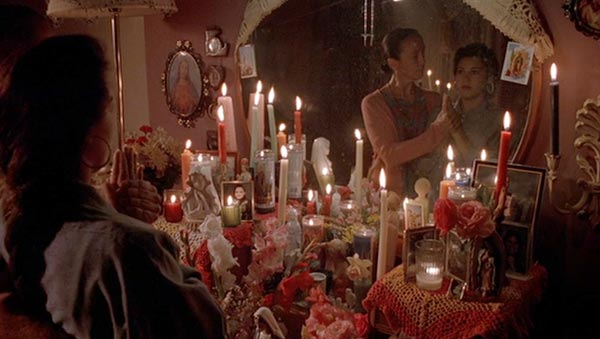
CG: The film ends with a memorial dedication to Nica Rogers, could you talk about her role in the film?
AA: Nica was a beautiful super smart, super badass young loca from the Echo Park gang. She was not always around so she’s not in as many scenes as some of the girls. And she had a baby Ruben. Nica died shortly after we finished shooting the movie, and her son was left orphaned with no safe stable place to go.
So after he and his grandmother were picked up on the streets homeless, she went to jail and Ruben went to the Children’s Institute and with the help and encouragement of her EP homegirls and the family’s support, I became his foster mother, then his adoptive mother. And Ruben is now 28 years old, just got married has a beautiful family and lives in Austin where he works as a grip on Fear Of The Walking Dead. He’s also one helluva director. (And he can shoot beautifully and Nica was a photographer too!)
After Mi Vida Loca came out I teamed up with Film Independent to do a benefit for Project Involve and to set up a college scholarship for the kids of Echo Park. Through El Centro Del Pueblo in Echo Park the Nica Rogers scholarship was able to help 20 students get to the next level of education.
